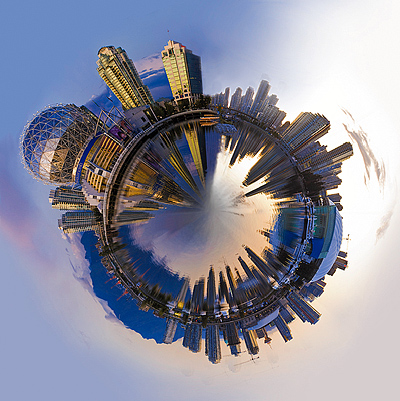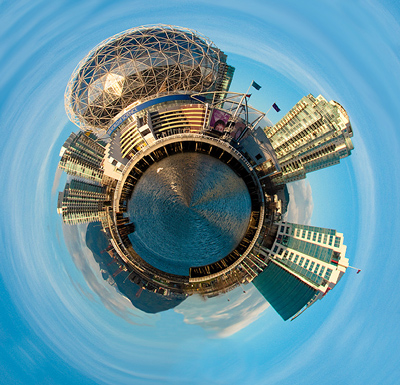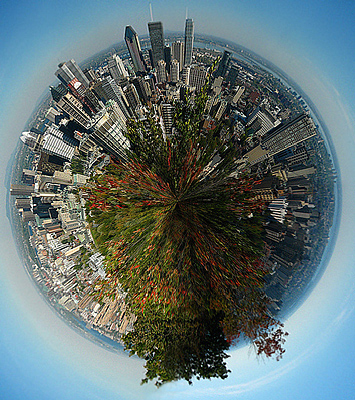Last night I saw urban planets. Let me explain. I went for a run around False Creek because the wind was howling and venturing on the Seawall would have meant big waves and unexpected saltwater showers. I had the  fierce Canon G10 with me, in a pouch on a stretchy belt that makes it incredibly easy to carry.
fierce Canon G10 with me, in a pouch on a stretchy belt that makes it incredibly easy to carry.
While it can in no way replace a DSLR, the G10 is an incredible little camera, sturdy, compact, extremely easy to use, loaded with very advanced features and even quite stylish. It shoots RAW files processed by a DIG!C 4 processor, has a 5X optical zoom down to a wide 28mm, a 3" PureColor LCD display with 460,000 dots, focuses in macro at 1 cm, has a old-style top-dial rotating ISO knob, is image-stabilized and features advanced motion and face detection technology. And with its 15 MP, it even beats my Canon XSi. It really feels remarkably solid and well built, slides in your hand with a purr and just begs to shoot. A real pleasure to play with. Oh, and it was a present from Marie. ;-)
So I was running and glancing around me at the urban urchin that surrounds False Creek and had to stop here and there to take pictures of the skyline. Nowhere is it more obvious why Vancouver was nicknamed the City of Glass. The sun was setting lazily and dragon boat crews were hard at work on the calm water.
I began wondering how I could bring panoramic shots back and yet show them in the limited horizontal space of my blog or even the main photo gallery. Then I remembered a technique I had noticed in a photo magazine and so tonight I decided to experiment a bit. It’s called a polar planet and involves quite a few steps but revolves around the very cool Polar Coordinates tool of the free GNU Gimp image manipulation program.
Here are my first attempts at polar planets, or as I’d rather call them, urban urchins. Not so perfect yet, I’ll need to refine my skills and work from true 360 panos (these were created from incomplete panoramas.) But it’s a fun way to look at a city and you get it all in one look.


Comments
Marie
dinahmow